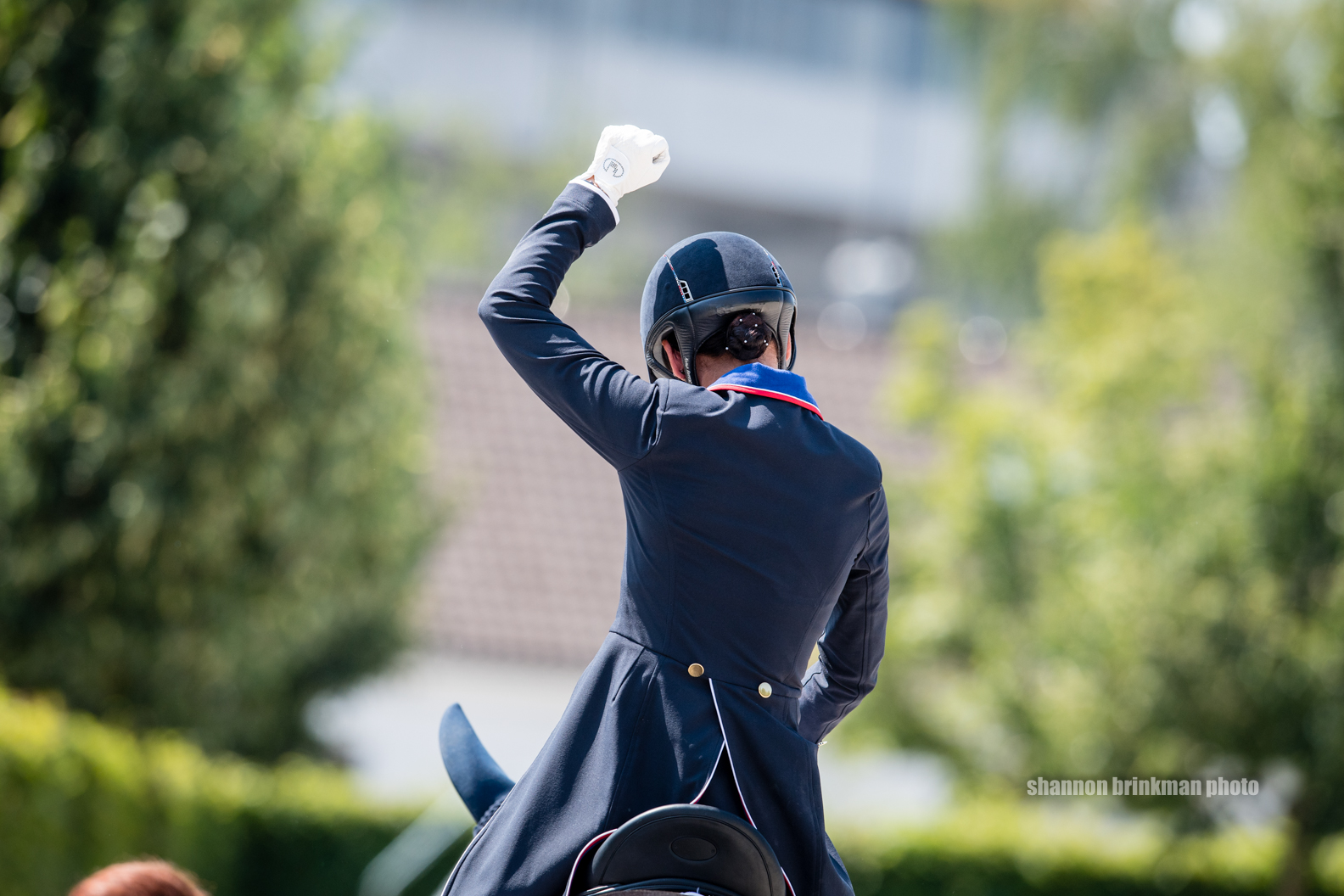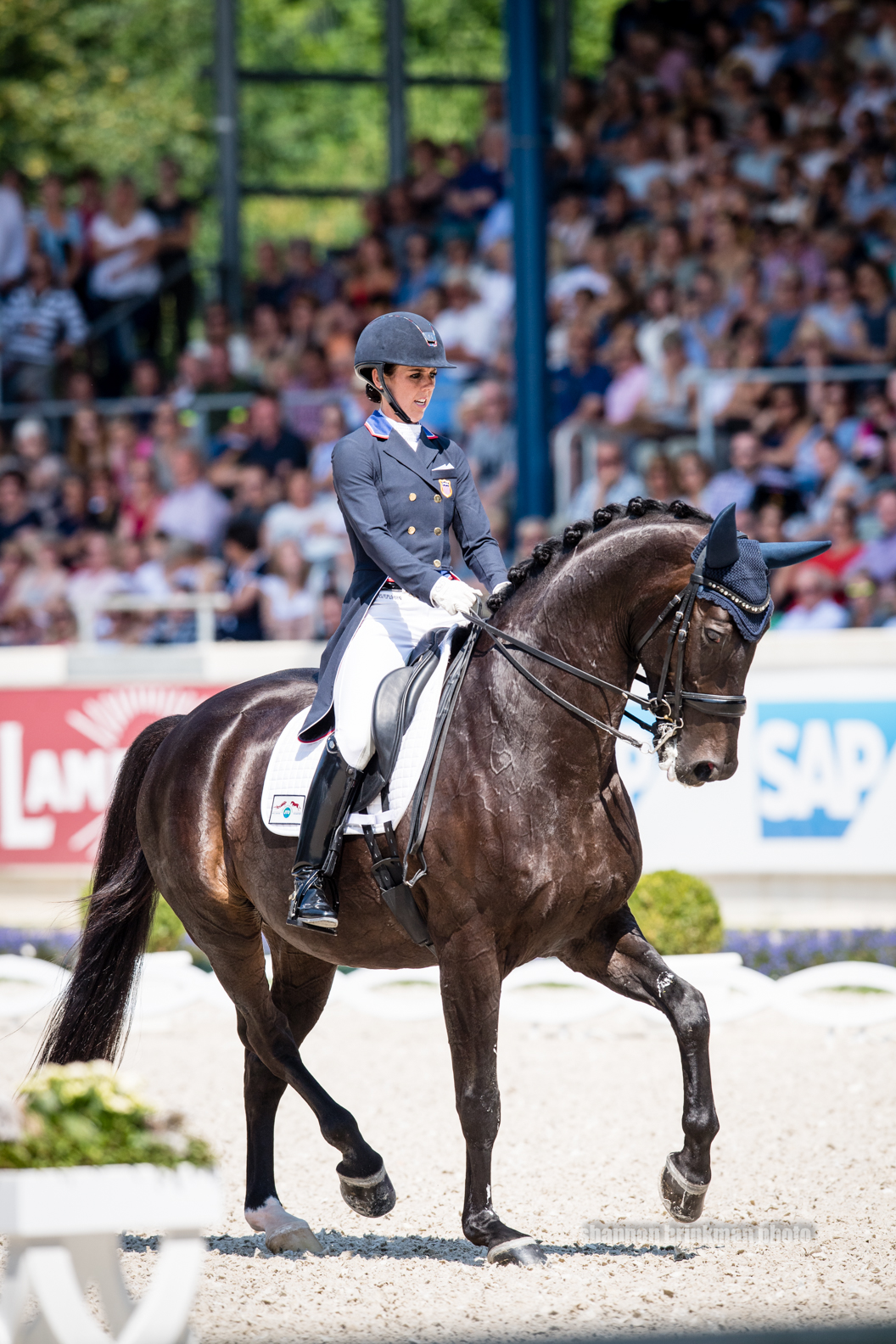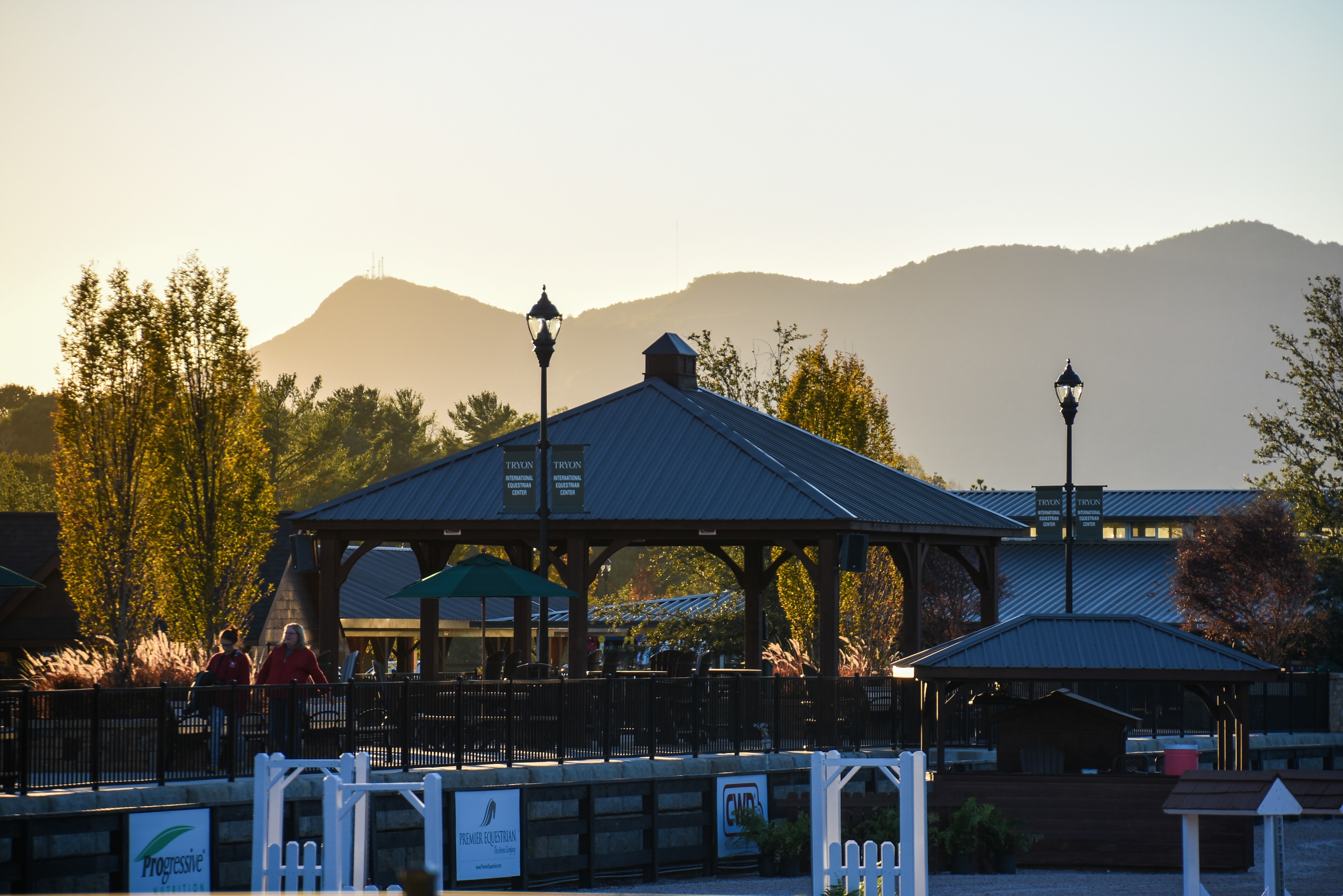For nearly two years, the FEI World Equestrian Games (WEG) has been beckoning on the horizon, slowly shining brighter as the moment draws near for the compilation of eight world championships at the Tryon International Equestrian Center (TIEC) in North Carolina. By this time, however, WEG has become all-consuming for those involved. On Sept. 3, the U.S. dressage team members will head for their training camp, a half-hour from TIEC, where “every minute of every day between now and the time when they go down centerline is planned,” according to USEF Technical Advisor Robert Dover. “We’re preparing for every eventuality,” he said. “No stone will be left unturned.”


In addition to working with their horses at the camp, team members will visit the WEG facility on foot to get familiar with it. Even those who competed in the test event there earlier this year likely will find themselves on a learning curve. As USEF Director of Sport Will Connell puts it, “This is not the Tryon you know. There’s going to be a completely different overlay.”
Although participants will be dealt with at a separate level from the general public, security is a concern during what the FEI projects will be the country’s largest sporting event of 2018. The casual atmosphere that usually prevails at the carefully organized site, nestled close to the Blue Ridge Mountains, is going to have a unique vibe with 1,000 athletes, 1,500 horses and 500,000 spectators expected.


Michael Stone, the former FEI secretary-general who is the Tryon WEG’s president and sports director, has seen and been involved in a good number of WEGs over the years. The concept kicked off in Stockholm, Sweden, in 1990, and has been held once every four years since. Tryon is the second WEG venue in the U.S. The first was the Kentucky Horse Park in 2010.
At this WEG, Stone says, “The biggest difference is the scale of it. The numbers are enormous. The sport is more popular than it was [in 2010]. The numbers for all the disciplines are increasing—a lot more logistics are involved.”
WEG will be the last championship for Dover, who guided the team to Olympic bronze in Rio two years ago and is working nonstop before heading to retirement later this autumn. The six-time Olympian was bursting with pride after the summer European tour of the USA’s short-listed dressage riders. It provided not only preparation for the athletes—human and equine—but also brought the picture into sharper focus with a chance to evaluate which countries and riders may be medal contenders for the Sept. 11–23 WEG dressage competition.
The seven Americans who went abroad all distinguished themselves—not just the likely team members but also others who could provide back-up and gain experience in the process as they look toward the 2020 Tokyo Olympics.
The top six nations in the WEG will qualify for Tokyo, which is a goal for the U.S., but the strength of the American program means medals should be in the cards as well. This looks like the all-time high point for American dressage, at a moment when the competitive standard for several other nations is also at its peak. After shows in Rotterdam, The Netherlands, and Leudelange, in Luxembourg, the Aachen, Germany, fixture in July provided the truest test for the type of mettle it will take to do well at WEG. Aachen is regarded by many as the world’s greatest show, and while some other disciplines may cite a different favorite, it certainly fills that bill for dressage. Many of the top riders and horses were there, with the U.S. coming close to a gold medal.
It was likely that the Aachen squad of Laura Graves (Verdades), Kasey Perry-Glass (Goerklintgaard’s Dublet), Adrienne Lyle (Salvino) and Steffen Peters (Rosamunde) would be the WEG team, which had not been named at press time.
In the first competition at Aachen, the Grand Prix, Laura Graves—ranked No. 2 in the world—won with 80.606 percent, while world No. 1, Isabell Werth of Germany, finished a mind-boggling 17th aboard Emilio. While Dover is fond of saying that “the sandbox [arena] is the same in Aachen or Luxembourg” (fill in the blanks with Wellington, Rotterdam or some other show if you like), the game still can go awry in many ways. Emilio, for instance, just wasn’t playing for Werth in the Grand Prix, where the U.S. squad wound up in first place, 2.19 points ahead of Germany after that competition. The Aachen team medals, however, weren’t awarded until after the Grand Prix Special two days later, when it was Graves who had several “That’s horses!” moments after Verdades was spooked by a video camera on the move.

Discussing the Germans, Dover noted, “On that first day, they did not have as much luck as we did.” The second day, it went the other way for the U.S. Had the format been the same as it will be for the WEG, with teams stepping up on the podium after the Grand Prix, “We would have had gold medals hanging around our riders’ necks,” he pointed out. Instead, the Dutta Corp. U.S. Dressage Team had to settle for silver.
But the silver had a silver lining in the breakthrough performances of Perry-Glass and her 15-year-old Danish Warmblood gelding. She is a rising star and her score of 78.787 percent in the Special was an acknowledgment by the judges of her horse’s ability. How did he show it off? “It is just a matter of putting it all together and really going for it,” said Perry-Glass, who was third behind Werth, back on top again with Emilio, and another German rider, Helen Langehanenberg on an American-owned horse, Damsey FRH.
In the Freestyle before a packed Deutsche Bank Stadium, Perry-Glass was again the highest finisher for the USA, second to Werth (87.625) with a personal best of 85.205 percent, as two judges had her first in the technical marks. She also broke 90 percent twice in the artistic scores.
Dublet rested following Aachen in 2017 until late March this year, and the time off from the arena stress obviously had done him good. After her ride, a thrilled Perry-Glass said, “I just felt like he was very with me and really wanted to show that he’s up there with the top horses.”
Graves was third as Verdades got over being “camera shy,” and while her score of 85.085 was nearly four points off her second-place finish to Werth and Weihegold OLD at the April FEI World Cup Final, it still was a very healthy score, demonstrating her mount was back on track. Lyle, the other U.S. rider in the Freestyle, was 10th on Salvino with 78.920.
So Dover ended Aachen with a smile, saying he would be happy for “one more week like it or better” at the WEG.
Others who distinguished themselves at Aachen included Shelly Francis, winner of the four-star Freestyle on Danilo; Olivia Lagoy-Weltz, third in that Freestyle with Lonoir, and Peters, who rode Suppenkasper to fourth place in the four-star Grand Prix Special. Another short-listed rider, Ashley Holzer, made her mark in Europe by coming in second at Luxembourg in the Grand Prix on Havanna.
“The horseflesh is just superb on this team, and the riding is what we can call a true American style of riding that has been a trend now since the mid- to late-’80s,” Dover enthused.
Recalling the big names of the past, he noted, “We’ve seen so many lovely riders, and now this whole group of riders is just wonderful. They have an elegant sympathy and a grace with their horses, and also off their horses.”
Asked for a quick assessment of each rider on the Aachen team, Dover said, “Laura is a star with Verdades and she has proven she can beat the No. 1 in the world in both the Grand Prix and Special. Adrienne is one of the greatest riders and people I’ve ever had the privilege of knowing and working with. She is just magnificent on this beautiful stallion. Kasey is one of our younger athletes, but she is more mature now than ever and has a great sense of what she’s doing. Steffen, it goes without saying, is one of the top riders in any arena in the world. When you have Steffen on a team, it’s a plus because he has that ring savvy.”
Of the other short-listed riders, Dover called Francis “one of our most experienced riders on beautiful, beautiful Danilo,” and he was thrilled at her Freestyle victory. “It makes me so happy that Ashley [formerly a Canadian team rider] is with the American team. Not only is she a great trainer and rider, but she is also a super coach and an asset to any team. Olivia is one of the most elegant riders. She has an exquisite leg position and is very sensitive.”
Although the three European shows offered head-to-head competition with most major rivals for the podium, there was no definitive way to set the medal odds for the WEG due to several factors. For instance, the Netherlands’ star, Edward Gal—who won at Rotterdam with Glock’s Zonik—was not part of the fourth-place Dutch team at Aachen. Great Britain’s strongest pairs, Charlotte Dujardin on her new ride, Mount St. John Freestyle (also known as “Mrs. Valegro”) and her mentor, Carl Hester, with Hawtins Delicato, did not appear at any of the shows U.S. riders contested.
While Hester, the architect of Britain’s gold-medal sweep at the 2012 Olympics, is thinking positive for his side, saying, “Everyone’s got their mojo back,” he notes that the WEG may be “early” for young horses like his and Dujardin’s, since they are both 9-year-olds. Mount St. John Freestyle is undefeated at Grand Prix, but as of mid-July had competed outside Britain only once.
At the same time, Hester mentioned the fact that when Britain did not get a medal at a championship (the 2017 Europeans) for the first time in eight years, it “gives you a bit of a kick again.” Meanwhile, management changes pose a challenge for the British effort. But as Hester pointed out, when Connell left as Britain’s equestrian performance director in 2014 to take the U.S. job, “That’s the best thing that ever happened to you [the U.S.]. It’s a no-nonsense, straightforward approach—‘This is how we do it, this is what your expectation should be.’ This is how we became successful.”
Dover has watched videos of recent performances by Hester’s and Dujardin’s horses and feels he can make an assessment from them. “I think they certainly are contenders for a medal, that I will say,” mused Dover. “But I look at Germany as our biggest competitor. Germany is a superpower.”
Germany has enormous depth. At Aachen, Werth was without Weihegold, the mare on which she is ranked No. 1 in the world among horse–rider pairings. That horse already had proven herself as a team mount; Emilio was auditioning for his role. The Germans also managed to win the team competition without the world No. 5 powerhouse combination of Sonke Rothenberger and Cosmo, who had an infection and is expected to be back for the WEG.
There is a real possibility that the U.S. can clinch the silver, as it did at the 2002 WEG in Jerez, Spain. Debbie McDonald, who trains Graves, Perry-Glass, Lyle and Lagoy-Weltz, was the leading rider on that team with Brentina. McDonald takes over as U.S. technical advisor after Dover departs and is on hand at the competitions, helping prepare her riders.
In the WEG contest for the individual medals that will be awarded in the Special and the Freestyle, Denmark, third in the team standings at Aachen and definitely a team-medal contender at the WEG, has a star in the combo of Cathrine Dufour and Atterupgaard’s Cassidy, ranked fourth in the world. That pairing was the overall dressage champion of Aachen for points earned in the five-star Grand Prix, Special and Freestyle. Dufour was just 0.025 percent ahead of Perry-Glass and 1.042 in front of Graves, who was third, 0.507 better than Werth, who is the favorite for gold at the WEG.
Although anything can happen (the cases in point are Emilio in the Grand Prix and Verdades in the Special) Dover is “cautiously optimistic” about the team’s chances, noting that going to Aachen, a WEG or an Olympics is sort of like watching the curtain rise for a play. “You watch it play out: Sometimes things take a turn, someone forgets their lines, one prop doesn’t work. I have been on each kind of a team, where things just worked and things are so fabulous. I’ve also been on these teams where we were fourth, when it almost has been there and just didn’t play out perfectly.”
The U.S. gets an extra boost from the group supporting the riders, whether it’s the veterinarians, physios, grooms or managers. “You can hear other teams talk about America with a certain respect and maybe a pang of jealousy over what we give and what our athletes have. I don’t think there is a team that comes close to what we deliver to our athletes as we travel,” said Dover.
Click here for complete dressage coverage, event highlights, and a behind-the-scenes experience during #Tryon2018. Coverage of the FEI World Equestrian Games™ Tryon 2018 is brought to you by Vita Flex.











